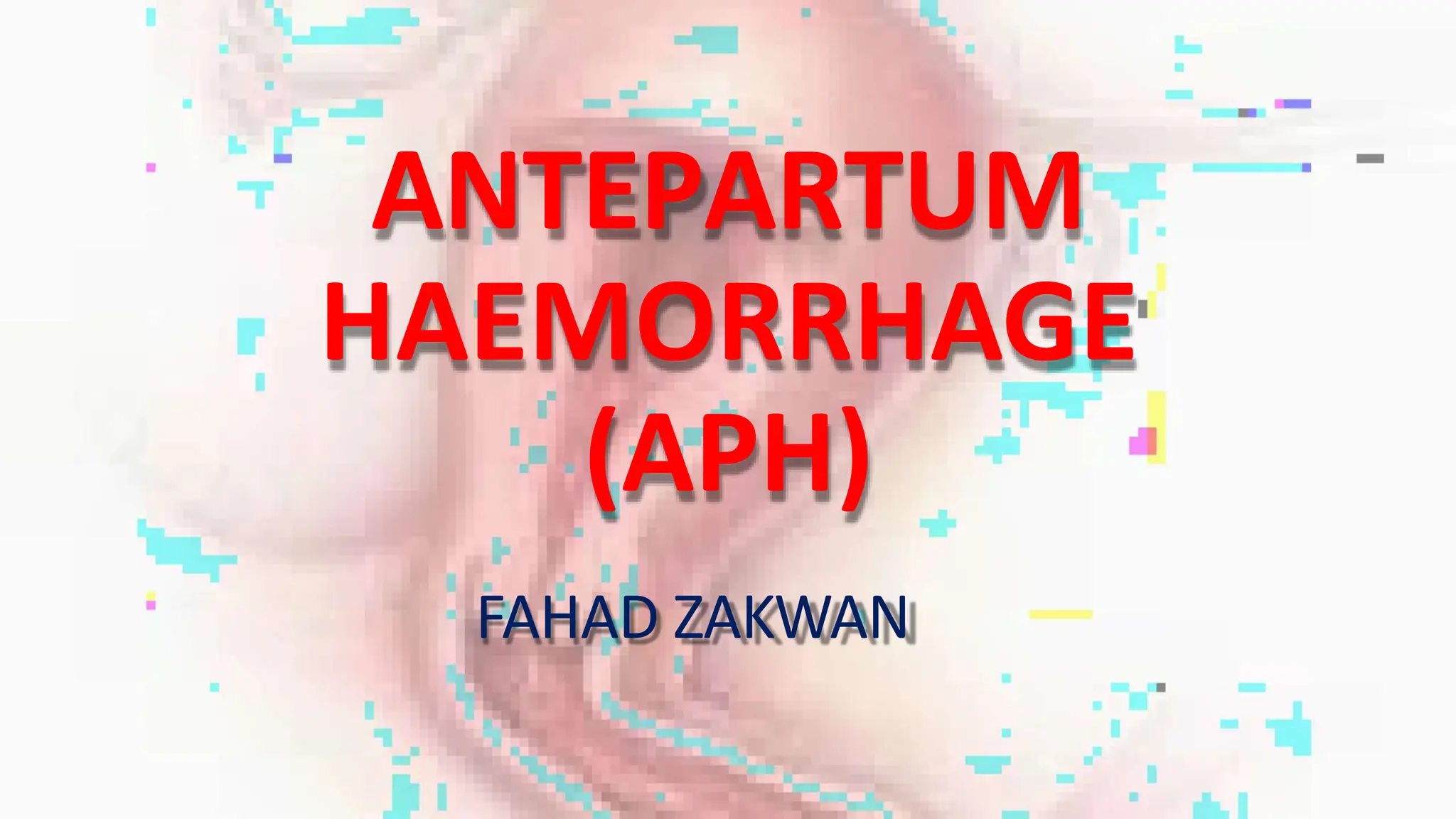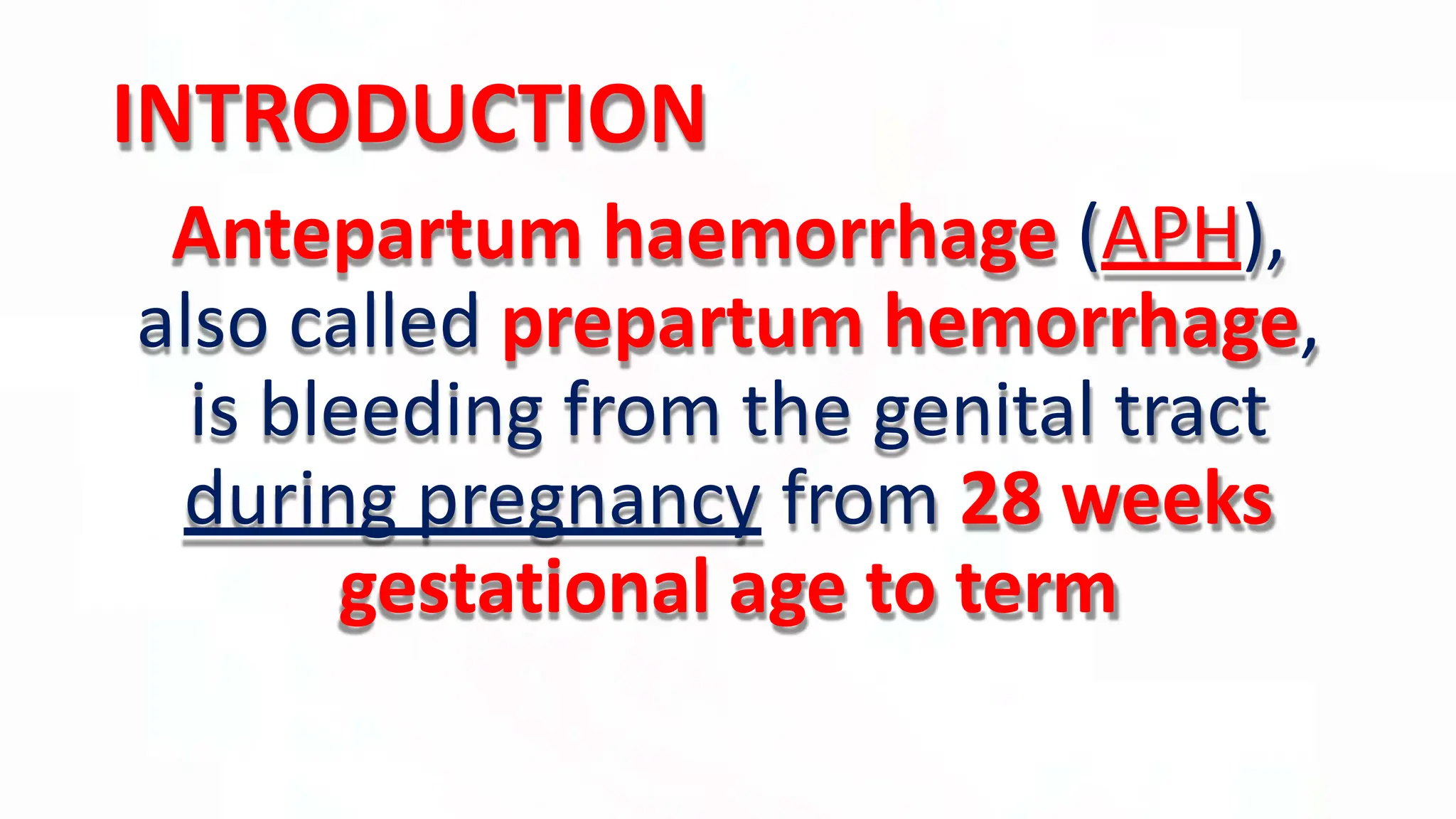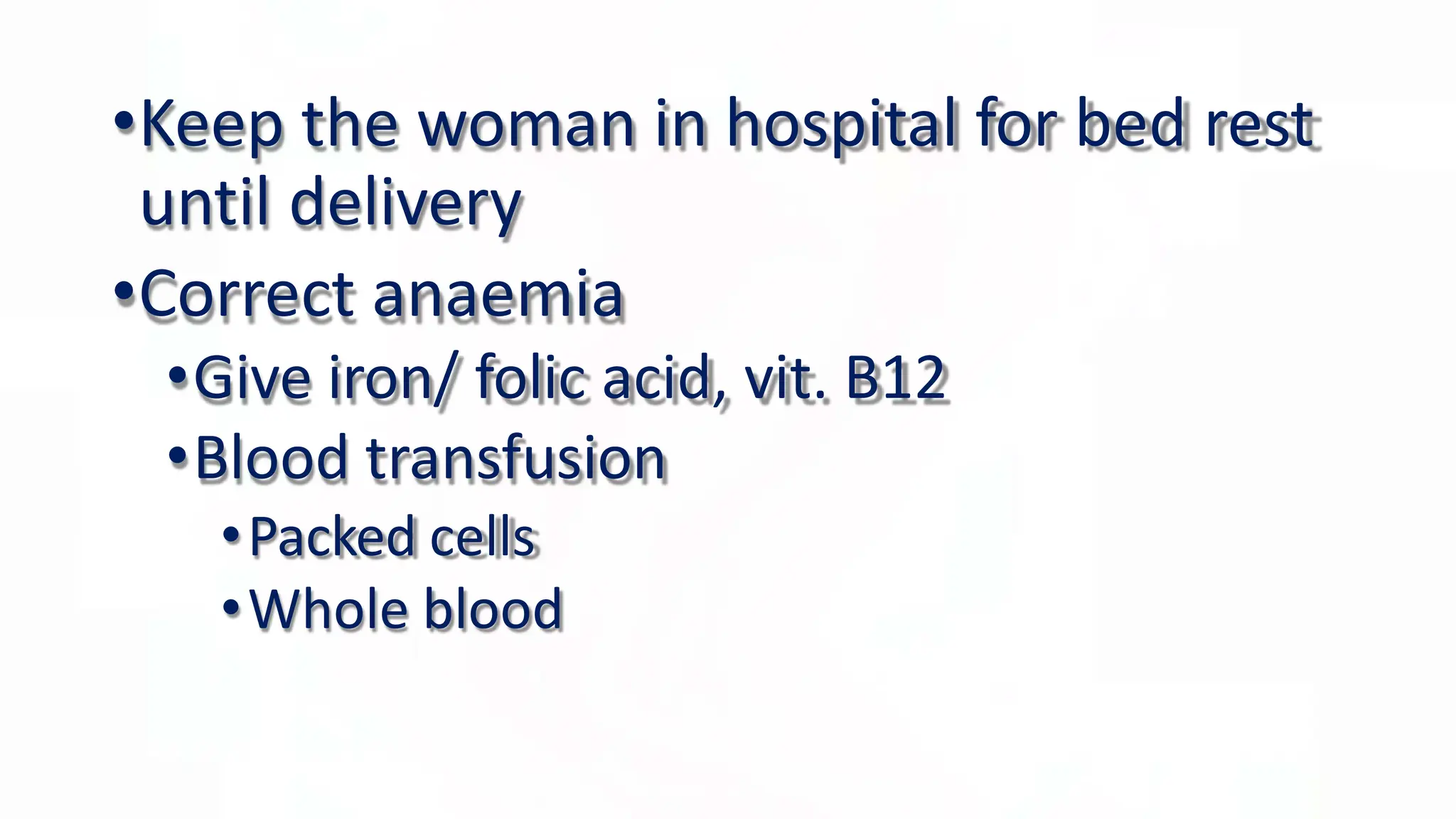Antepartum haemorrhage (APH), or bleeding during pregnancy, can be caused by placenta praevia or abruption placentae. Placenta praevia occurs when the placenta implants in the lower uterine segment, potentially causing bleeding as the cervix dilates. Abruptio placentae involves premature separation of a normally implanted placenta from the uterus, and risks include hypertension, smoking, and trauma. APH is a medical emergency treated initially with IV fluids and blood transfusions, with management depending on gestational age and severity of bleeding, potentially involving bed rest, corticosteroids, or caesarean delivery.












































